How to Visually Type
Prone and Supine Eyes/Eyebrows - Prone and Supine
Prone eyebrows and eye shapes have apexes (highest points) toward the outer edges of someone’s face (left image). This relates directly to Prone behavior.
Supine eyebrows and eyes have apexes will be more centralized of situated towards the middle of a person’s face (right image). This is directly related to Supine behavior.
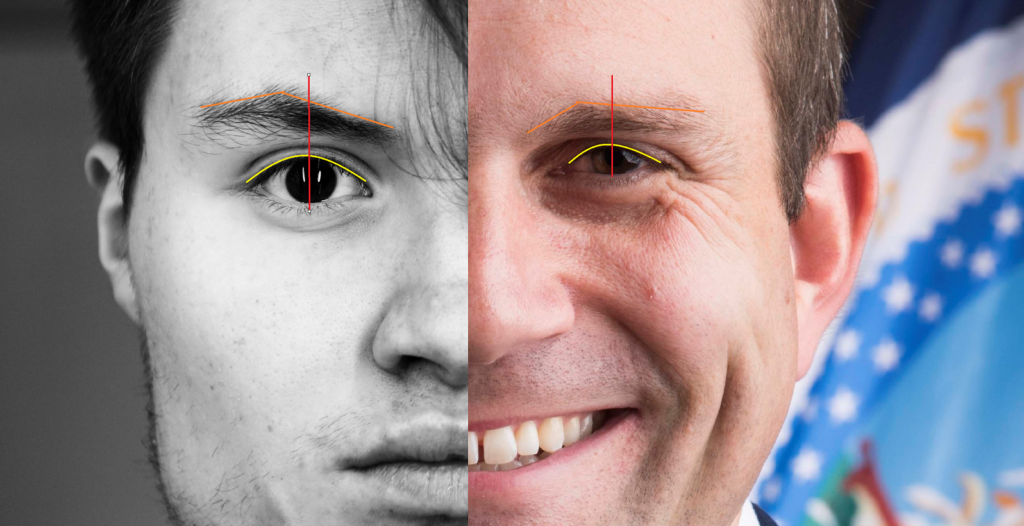

Squinch and Peer - Ne/Si and Se/Ni
When Ne/Si users squinch, they activate many more muscles around their eyes, including the orbicularis oculi muscles. This leads to them appearing more strained when they smile or show expression on their faces (left image). Se/Ni users seem to have far less muscle activation and so have a more relaxed expression around their eyes (right image).
Inset of eyes - Se/Ni and Ne/Si
When looking at a person’s eyes, they can appear relatively inset or outset. Inset eyes are eyes that appear sunken into the skull (left image). Outset eyes appear to pop out of the face (right image). Inset eyes are Se-Ni. Outset eyes are Ne-Si.
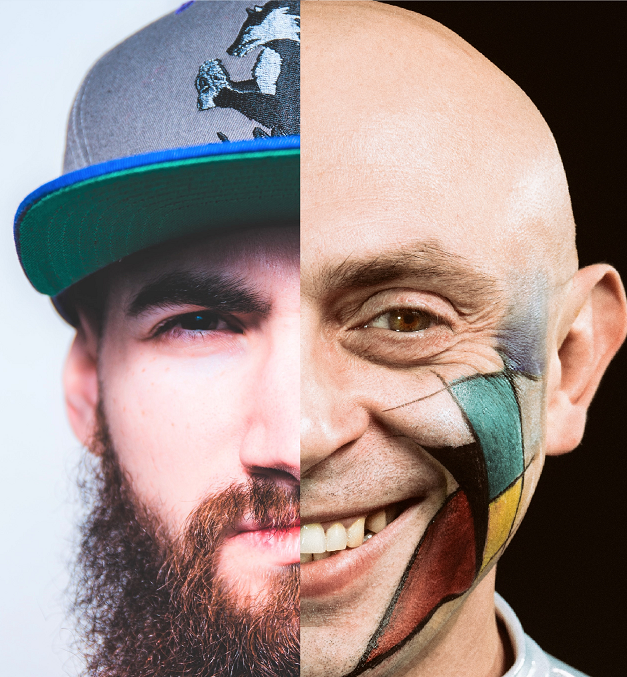
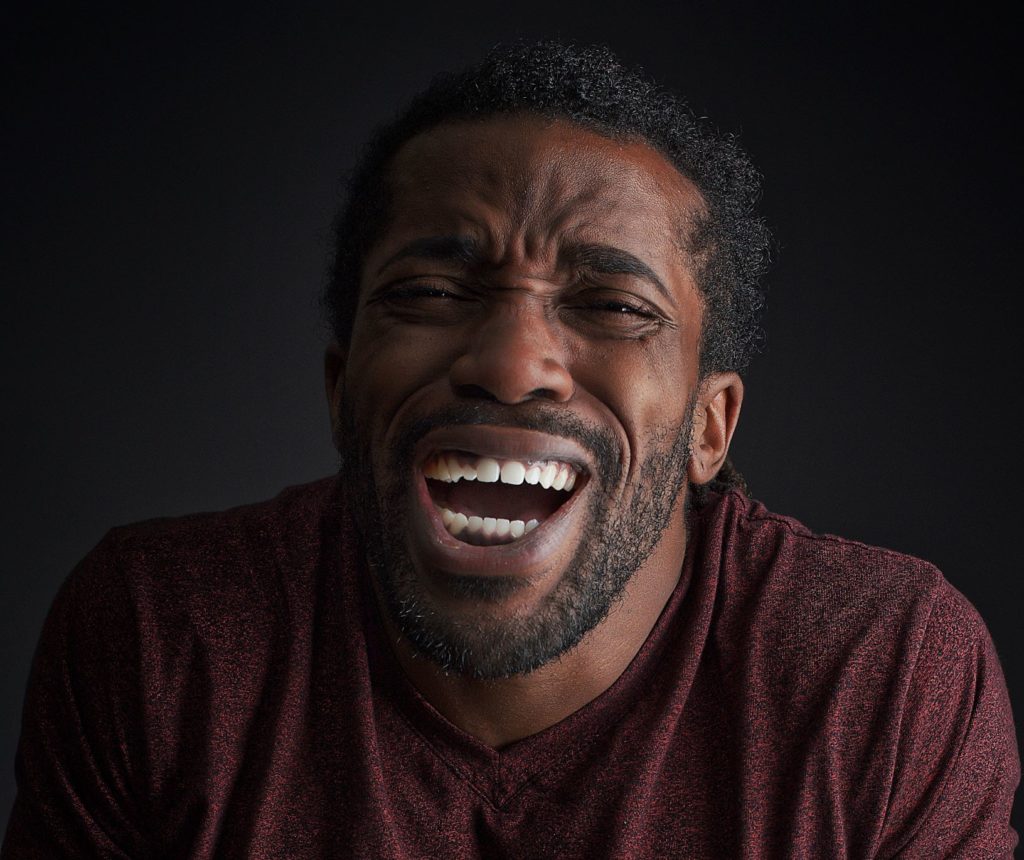
Procerus - Fe/Ti
The procerus muscle is a muscle in the forhead that is designed to scrounch up the forehead (see image). This muscle rarely if ever activates in Fi/Te users.
Though not all Fe/Ti users use this muscle, if an individual does activate their procerus they are almost definitely Fe/Ti.
Stroma Thickness - Ne/Si and Se/Ni
The thickness of stroma (fibers that radiate away from the pupil) can be highly variable from person to person. However, it is more common for Ne/Si to have thin stroma (left image) and for Se/Ni to have thick stroma (right image).
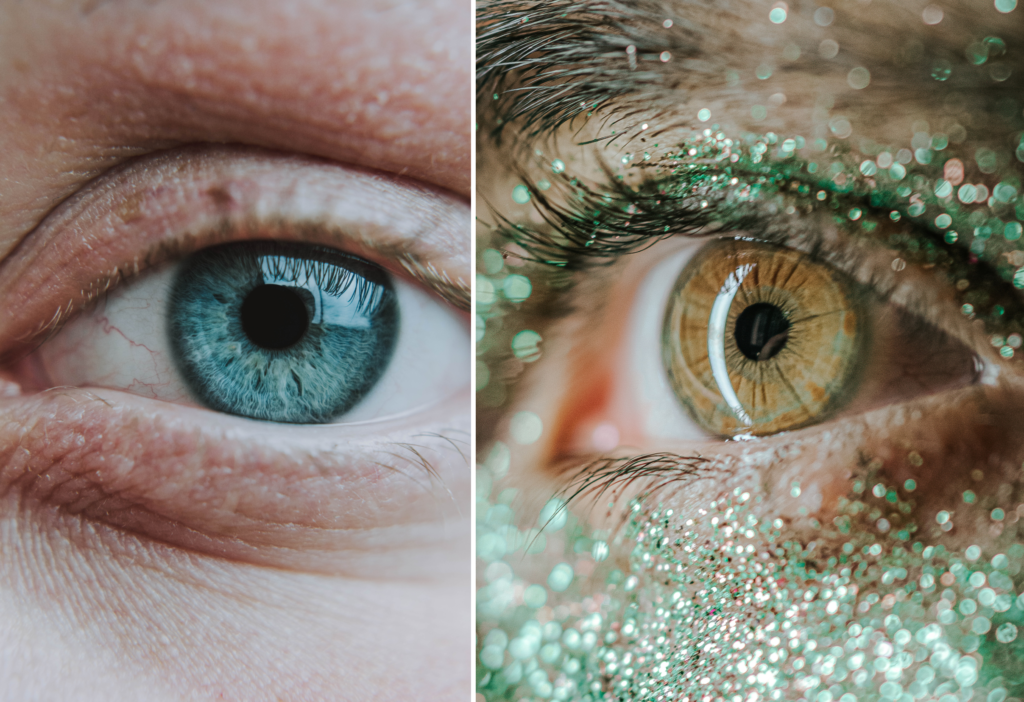
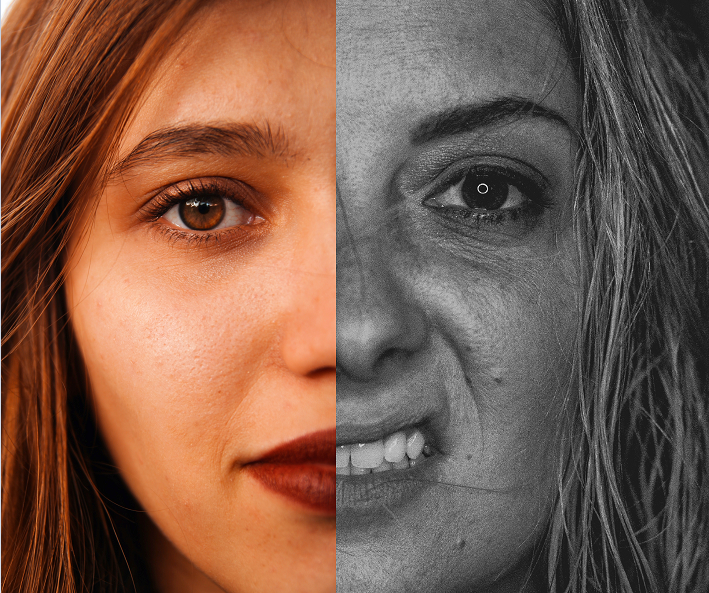
Snarl - Prone
The “snarl” is defined as an upward pull on the muscles above your mouth (right image). When these muscles are activated, it causes a person to bare their teeth, giving the appearance of snarling. People who activate these muscles frequently are more likely to be a Prone (T) type or subtype.
Bizygomatic Width - Fe/ti and Te/Fi
People with proportionally wider faces are more likely to be Fe-Ti, with somewhat of an exception being Gamma Class types (NTP).

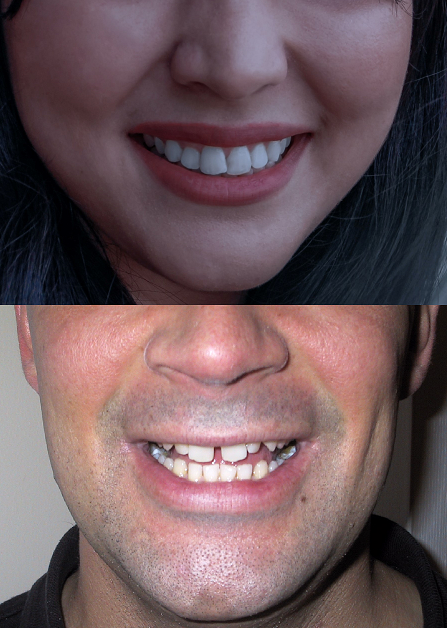
Teeth - Fe/Ti and Te/Fi
“Obtuse” diastema produces a gap that is wider at the bottom than the top. This is a striking meta tooth feature (Fe/Ti) often accompanied by microdontia (small teeth), also a meta tooth feature (bottom image).
Macrodontia (large teeth) is a Mesa tooth feature (Fi/Te).
Macro/microdontia can be generalized across the mouth or localized to a few teeth.
Meta teeth tend to be all the same size and are generally smaller – especially in relation to wider jaws that Fe tends to have. Mesa teeth (particularly the front two) tend to be bigger – especially in relation to the narrower jaws Fi tends to have.
With Fi/Te you will often see big incisors crossed over each other (top image), the exact opposite of small incisors pointing away from each other(producing a diastema).
Mouth Pockets - Mesa and Meta
Mouth pockets is a loose term meant to describe the apparent sacks that some people have under their lower lip (left image). The physiological cause of these pockets are unknown, but they appear to coincide mostly with Delta Object types (SFP) and Delta Class types (NTJ). They can be less commonly seen in Beta Object types (STJ) such as the one in the photo on the left.
Absence of mouth pockets does not necessarily indicate Meta.
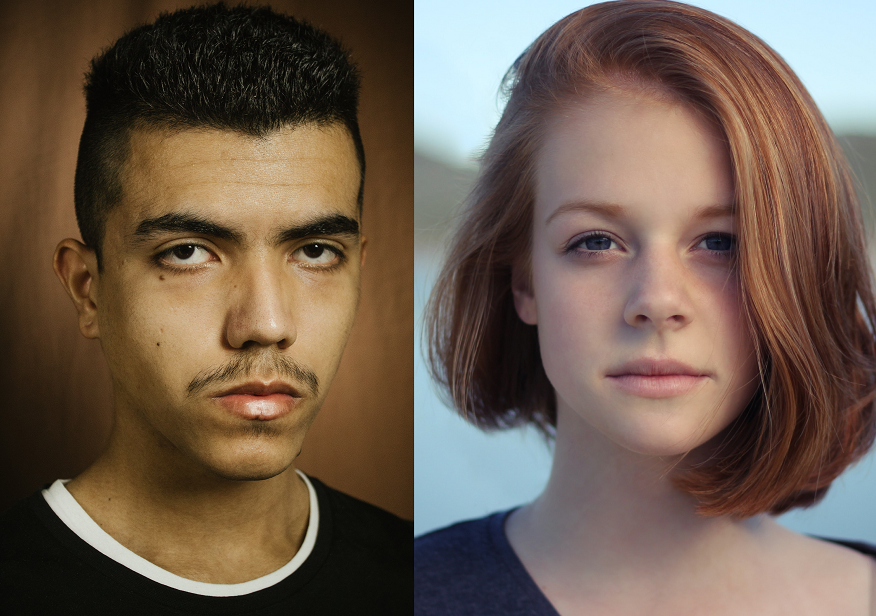
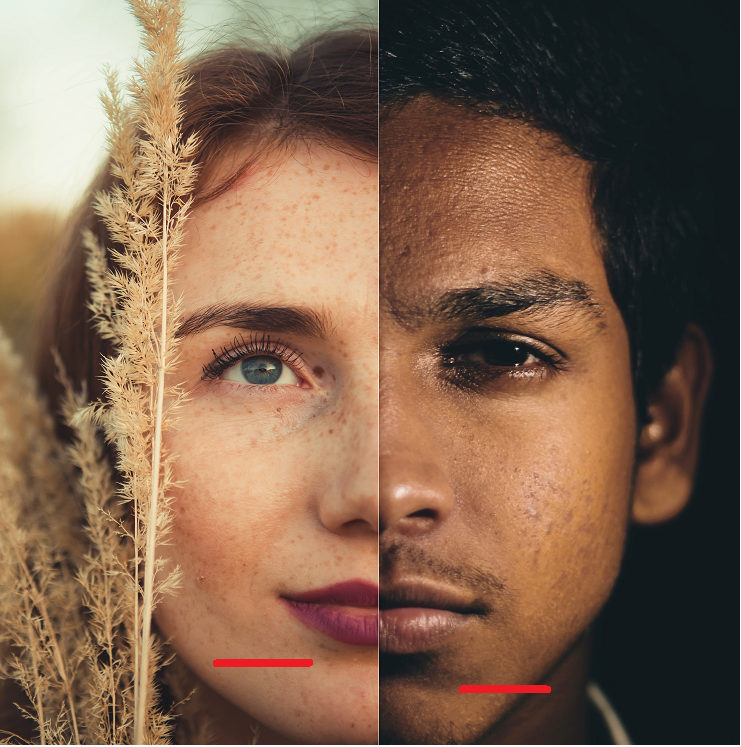
Labiomental Crease - Mesa and Meta
The labiomental crease is the line that separates the chin from the rest of a person’s face. The higher the line, the more Meta a person is. So Gamma Class types and Gamma Object types (NTPs/SFJs) will have the highest lines, while Delta Object types and Delta Class types (SFPs/NTJs) will have the lowest lines. All other types will have a line somewhere in the middle.
Forward Cervical And Thoracic Curvature - Fi
Although anyone can have bad posture, it is very common to see in Fi types. Beta Class types (NFP) and Delta Object types (SFP) are by far the most affected by this issue, in which the top of the spine curves forward and the hips also jut forward.
Having higher Te may result in better posture.

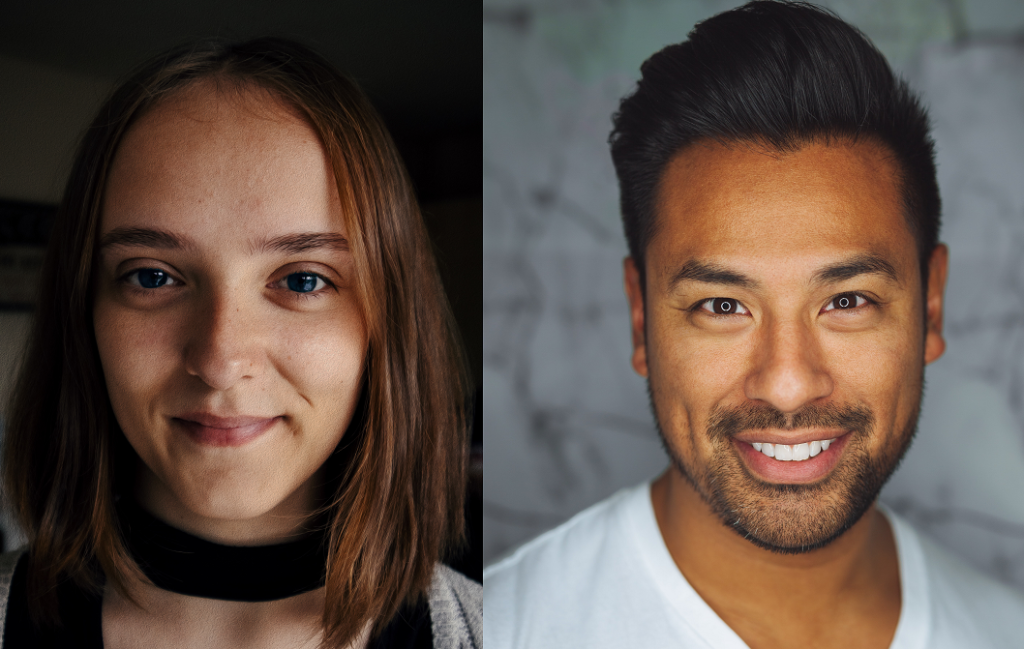
Eye Size - P and J
This one is pretty simple. The bigger their eyes, the more likely they are to be P (left image). So SFP’s, NFP’s, STP’s, and NTP’s are the most likely to have large eyes while SFJ’s, NFJ’s, STJ’s and NTJ’s are the most likely to have small eyes.
Find Out Your Personality Type
Having trouble figuring out your Physiotype? Want to see if your Physiotype matches your MBTI or Socionics type?
